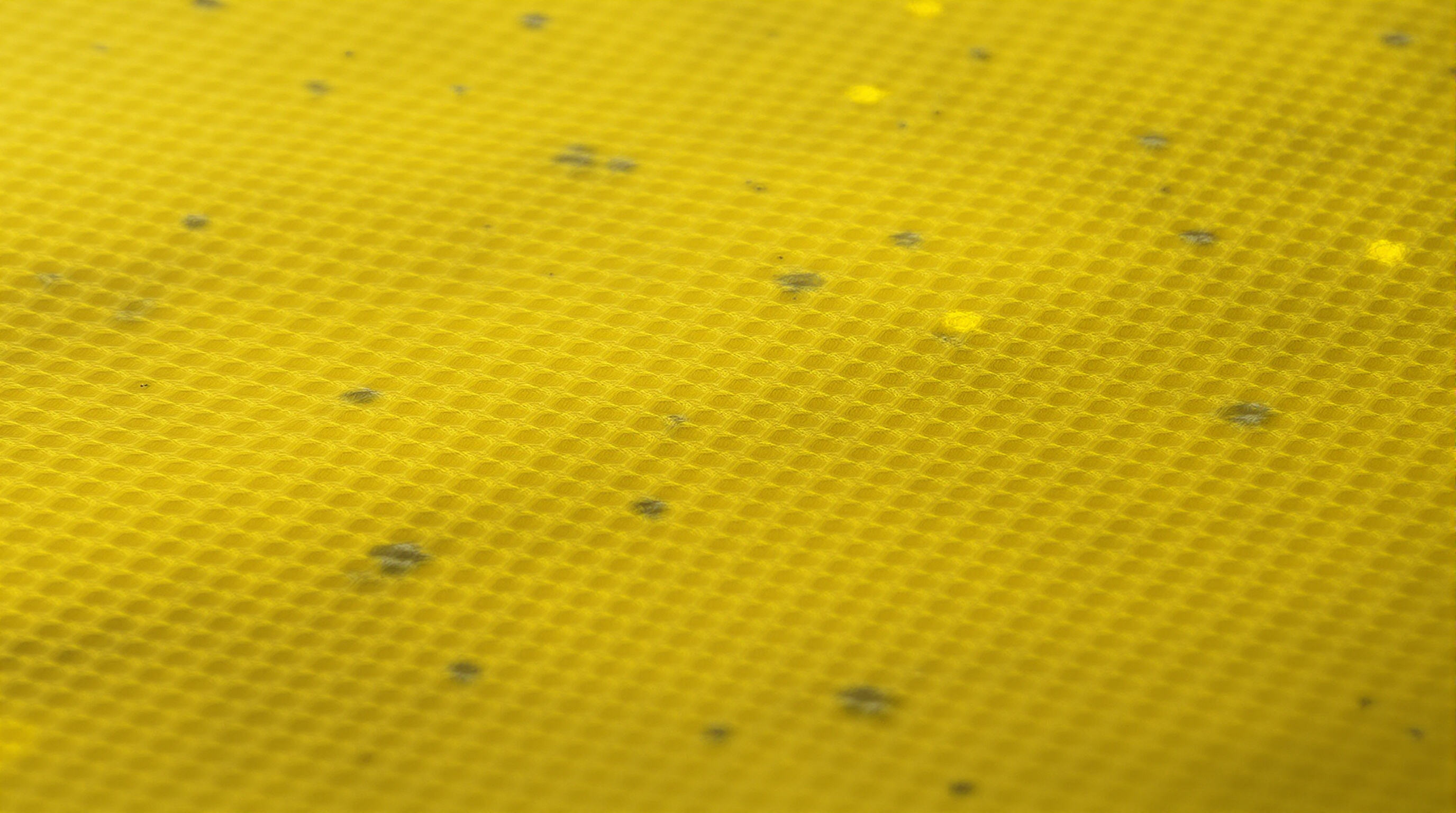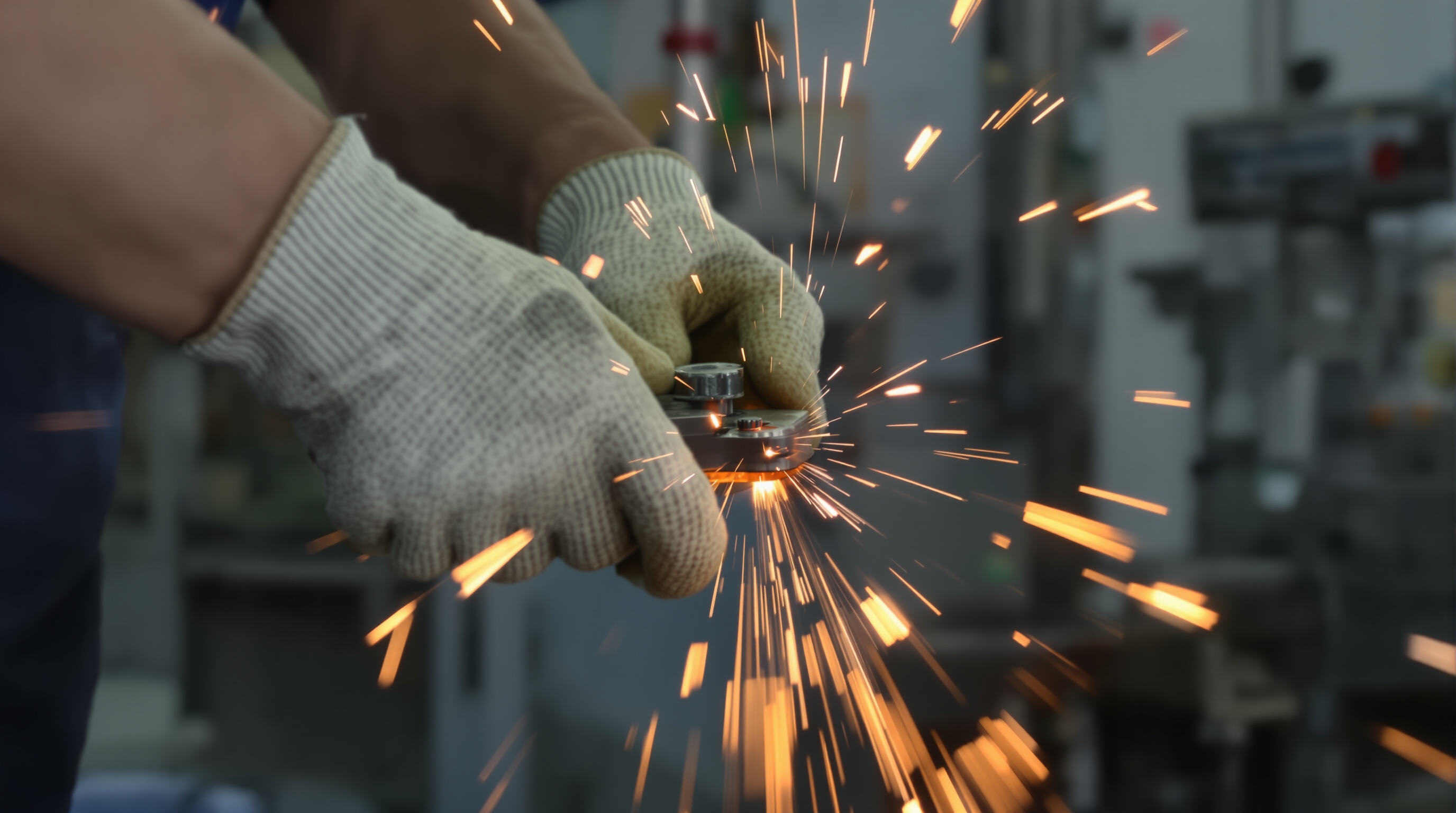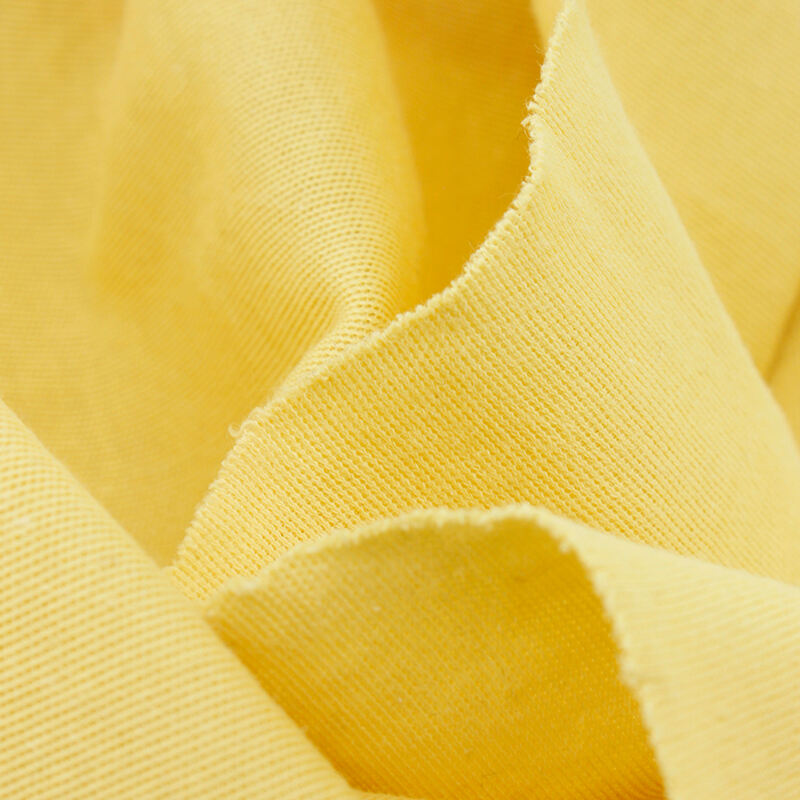Understanding Kevlar Fabric and Its Role in Cut-Resistant Gloves
What is Kevlar® and why it's used in industrial gloves
Kevlar® was created back in 1965 by DuPont as a special type of synthetic fiber known as para-aramid. What makes this material stand out is how strong it actually is compared to other materials. For instance, when looking at tensile strength relative to weight, Kevlar beats steel by about eight times over. The reason behind this impressive performance lies in those tightly packed polymer chains within the material itself. These create a really sturdy and heat resistant structure that works great in dangerous situations such as working around hot metals during processing tasks. Regular fabrics like cotton or leather just can't hold up under similar conditions. Even after being subjected to temperatures reaching around 400 degrees Fahrenheit (which equals approximately 204 Celsius), Kevlar still manages to keep roughly 85 percent of its original strength intact. That's why we see so many industrial workers relying on gloves made from this stuff whenever they need protection against both heat and physical impacts on the job site.
How para-aramid fibers provide superior cut resistance
Para aramid fibers have a unique crystal structure that forms a tight network capable of spreading out the force from sharp cuts. According to tests following ANSI/ISEA 105 guidelines, Kevlar gloves actually resist cutting better than similar weight HPPE materials by around two thirds. They also create significantly less heat when rubbed against surfaces compared to traditional stainless steel mesh options. What makes Kevlar stand out is how strong it remains while being so lightweight. Compared to regular leather gloves, Kevlar offers three times the strength for the same weight, which means workers get better hand protection without feeling weighed down during their tasks.
Comparison of Kevlar® with other cut-resistant materials (HPPE, steel fiber, leather)
| Material | Cut Resistance (ANSI A1-A9) | Heat Tolerance | Flexibility Index* | Avg. Service Life |
|---|---|---|---|---|
| Kevlar® | A4-A7 | 800°F (427°C) | 92/100 | 8-12 weeks |
| Stainless Steel | A5-A9 | 1500°F (816°C) | 34/100 | 4-6 weeks |
| HPPE | A3-A5 | 180°F (82°C) | 88/100 | 6-8 weeks |
| Chrome-Tan Leather | A2-A3 | 212°F (100°C) | 78/100 | 2-3 weeks |
*Based on 2023 GripTec Lab assessments of 15 industrial glove models
The balance of protection, flexibility, and comfort in Kevlar gloves
The best Kevlar® gloves on the market manage to stay incredibly thin at only 0.28mm yet still give workers around 95% of their normal touch sensitivity. That kind of sensitivity matters a lot when doing detailed work such as metal stamping where parts need to fit together within tight 0.5mm margins. What makes these gloves stand out is their special hexagonal weave pattern that actually cuts down on hand fatigue by about 22% over an entire 8 hour shift. The 2024 Ergonomic Glove Trials backed this up pretty convincingly. Workers in the auto industry who handle sheet metal have been making the move away from those heavy steel reinforced gloves toward Kevlar® options instead. About three out of four sheet metal technicians made the switch within just two years because they found these newer gloves simply worked better for their daily tasks.
The Science Behind Kevlar’s Cut and Abrasion Resistance

Molecular Structure of Para-Aramid Fibers and Tensile Strength
What makes Kevlar so resistant to cuts has to do with its special para-aramid molecular setup. Basically, the polymer chains run parallel to each other and get connected through hydrogen bonds, creating this really organized crystal-like pattern. The result? A tensile strength rating of around 3,620 MPa, which is actually about five times stronger than steel when comparing materials of the same weight. Now, HPPE works differently because it relies on fibers going in one direction only. But Kevlar's bonding goes multiple directions at once, spreading out impact forces better across the material. This helps protect against both slicing and puncturing threats much more effectively than many alternatives can manage.
How Fiber Weaving Techniques Enhance Cut Resistance
The way fabric is woven makes a big difference in how well Kevlar protects against cuts. Ripstop weave patterns work by creating a grid of interlocked threads that help deflect blades, whereas double layer knitting forces any sharp object trying to cut through to pass through several different fiber directions, which slows things down considerably. A recent study from 2024 showed that these advanced weaving approaches can actually make materials about 40 percent more resistant to cutting compared to regular weaves, meeting the requirements set out in ASTM F2992-23 standard for level 5 protection. Some companies working in really dangerous environments mix in stainless steel fibers as an extra precaution, though most workers still go with pure Kevlar when they need their hands to stay nimble and responsive during delicate operations.
Durability Under Abrasion and Mechanical Stress in Metal Environments
Kevlar outperforms leather and HPPE in abrasive industrial conditions. Martindale abrasion tests show Kevlar withstands over 12,000 cycles—four times longer than leather—due to its resilient fiber structure. It also maintains integrity near heat sources, resisting degradation up to 427°C (800°F).
| Material | Cycles to Failure (Martindale Test) | Heat Resistance Threshold |
|---|---|---|
| Kevlar | 12,000 | 427°C |
| HPPE | 8,500 | 149°C |
| Leather | 3,200 | 93°C |
This durability makes Kevlar gloves essential in metal stamping, CNC machining, and sheet metal handling.
Applications of Kevlar Gloves in Metal Processing Industries
Kevlar fabric has become essential in safeguarding workers across metal processing operations. Its unique combination of cut resistance, heat tolerance, and flexibility addresses multiple hazards inherent in handling sharp metals and high-temperature materials.
Protecting Workers from Sharp Edges, Burrs, and Sheet Metal
Kevlar gloves prevent lacerations by dispersing impact energy through their para-aramid fibers. They conform to complex shapes without sacrificing protection, making them ideal for press brake operations where workers handle jagged steel plates. Unlike rigid steel mesh, Kevlar provides adaptive coverage against protruding burrs and sheet metal edges.
Performance in High-Risk Tasks: Stamping, Grinding, and Fabrication
In stamping and grinding applications, Kevlar maintains structural integrity under extreme mechanical and thermal stress. Testing shows it resists incidental contact with temperatures up to 800°F without degradation—crucial near welding zones. Its superior abrasion resistance also minimizes wear from metal particulates, extending service life in fabrication environments.
Case Study: Kevlar Gloves in Automotive Metal Stamping Operations
A Tier 1 automotive supplier reduced hand injuries by 58% after equipping stamping line workers with Kevlar gloves. Employees reported better grip on galvanized steel blanks, and supervisors observed no drop in productivity despite the added protection.
Balancing Dexterity and Safety in Precision Metalwork
Kevlar’s high tensile strength—twice that of HPPE per ASTM D885—enables ultrathin, flexible knitting patterns. These gloves deliver ANSI/ISEA 105 Level A4 cut resistance while supporting precise movements, such as threading fasteners on aircraft-grade aluminum components, without restricting finger articulation.
Thermal and Multi-Threat Protection Features of Kevlar Fabric

Heat Resistance of Kevlar in Hot Metal Handling and Welding Proximity
Kevlar stays stable structurally when exposed to temperatures as high as 427 degrees Celsius or around 800 Fahrenheit, which makes these materials great for grabbing hot metal pieces or working close to welding sparks. According to research published in 2024 from AMSafe Inc., workers wearing Kevlar gloves experienced about 62 percent fewer burns than those who wore traditional leather gear in foundries. What's really impressive is how these fibers don't melt away or contract under heat stress, even when briefly hit by flying sparks from cutting operations.
Flame Resistance and Thermal Stability of Para-Aramid Fibers
Unlike many synthetics, Kevlar self-extinguishes when removed from flame. It retains 80% of its tensile strength at 250°C and withstands short-term exposure to 450°C due to its stable crystalline structure. This resistance to pyrolysis is vital in metal forging and casting, where flash heat and radiant energy are common.
Multi-Hazard Protection: Integrating Cut, Heat, and Flame Resistance
Modern Kevlar gloves offer integrated protection against three major hazards:
- Cut resistance (Level A5–A7 per ANSI/ISEA 105) from tightly woven para-aramid yarns
- Thermal protection against conductive heat during brief metal handling
- Flame resistance meeting NFPA 2112 standards for flash fire scenarios
Facilities using multi-threat Kevlar PPE reported a 38% reduction in heat-related incidents while maintaining dexterity for detailed metalwork, according to a 2024 Industrial Safety Report.
Compliance and Safety Standards for Kevlar Cut-Resistant Gloves
Overview of ANSI/ISEA 105 and EN 388 Cut Resistance Standards
For Kevlar gloves to offer real protection on the job site, they need to pass international safety tests such as ANSI/ISEA 105 and EN 388. The latest version of ANSI/ISEA 105 from 2020 breaks down cut resistance across nine different levels labeled A1 through A9. At the top end, A9 rated gloves can handle forces exceeding 6,000 grams which makes them absolutely necessary when working around those razor sharp aerospace materials or stamped metal components. Over in Europe, most shops follow the EN 388 standard that rates protection on a scale from 1 to 5 using circular blade tests. Workers in metal fabrication plants there rely heavily on these ratings. When choosing gloves, matching the right level to actual job conditions matters a lot. Something like A5 works fine for everyday fabrication tasks, but anyone dealing with serious cutting risks such as titanium machining needs at least an A7 rating to stay safe.
Testing Methods and Performance Levels (A1–A9) for Kevlar Gloves
Cut resistance is measured using the Tomodynamometer (TDM-100), where a rotating blade applies increasing force until penetration. Kevlar excels in this test due to its high tensile strength and layered weaves that absorb and disperse energy. Performance tiers include:
- A1–A3: Light-duty tasks (200–1,499 grams)
- A4–A6: Medium-risk metal processing (1,500–3,999 grams)
- A7–A9: Extreme hazards like titanium or hardened steel (4,000–6,000+ grams)
Independent labs conduct annual validation testing to ensure consistent performance as gloves age.
How Manufacturers Certify Gloves for Metal Industry Safety Compliance
To meet ANSI/ISEA 105 and EN 388 requirements, manufacturers implement strict quality controls, including:
- Optimizing fiber blends (e.g., Kevlar-HPPE hybrids for A6–A7 ratings)
- Ensuring stitch density of 8–12 per inch to prevent seam failure
- Conducting lot-sample destruction tests under OSHA-aligned protocols
Certified gloves feature permanent labels indicating cut level and standard (e.g., “A7 – ASTM F2992-15”), enabling quick verification during safety audits in metalworking facilities.
FAQs About Kevlar Fabric and Cut-Resistant Gloves
What makes Kevlar gloves preferable over leather or steel mesh gloves?
Keevlar gloves are lightweight and offer higher cut resistance and flexibility compared to the heavier steel mesh options. They maintain their protective qualities better under high temperatures.
How do Kevlar gloves achieve high touch sensitivity?
Through a special hexagonal weave pattern, Kevlar gloves reduce hand fatigue and preserve touch sensitivity, important for tasks such as metal stamping.
Can Kevlar gloves protect against multiple threats at once?
Yes, modern Kevlar gloves integrate cut, heat, and flame resistance, making them suitable for high-risk environments.
Table of Contents
- Understanding Kevlar Fabric and Its Role in Cut-Resistant Gloves
- The Science Behind Kevlar’s Cut and Abrasion Resistance
- Applications of Kevlar Gloves in Metal Processing Industries
- Thermal and Multi-Threat Protection Features of Kevlar Fabric
- Compliance and Safety Standards for Kevlar Cut-Resistant Gloves
- FAQs About Kevlar Fabric and Cut-Resistant Gloves




